10 toxic cleaning products and their natural alternatives
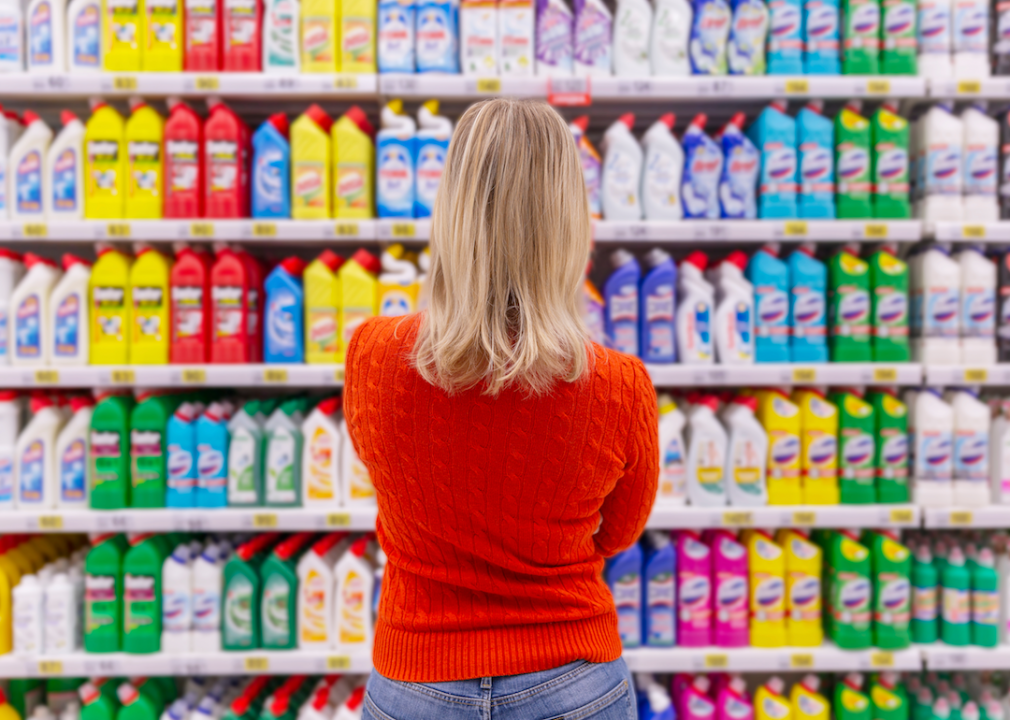
Deman // Shutterstock
10 toxic cleaning products and their natural alternatives
The smells of cleaning products, disinfectants, and laundry soaps for many people are hallmarks of a clean home. While the overpowering aroma of furniture polish or laundry soap may evoke certain pleasant associations or childhood memories, those familiar scents are mostly toxic. They are comprised of everything from reproductive disruptors to phthalates and allergens. Air fresheners alone release more than 100 chemicals and create adverse health effects in an estimated one-fifth of the U.S. population. Lysol aerosol sprays send corrosives and respiratory irritants airborne that can cause developmental problems, harm vision, and pollute waterways.
The sodium hydroxide in most commercial drain cleaners eats through the very pipes it’s intended to clear while burning all organic matter along the way. And a 2018 study published in the Canadian Medical Association Journal found the toxins in household cleaners can lead to childhood obesity. Nevertheless, toxic cleaning chemicals are ubiquitous in supermarket aisles and big box stores—and people keep buying them. Environmental Protection Agency (EPA) standards are known for being lax, and greenwashing or subpar “green” products has left consumers with limited options.
Using ratings from the Environmental Working Group (EWG), scientific studies, and other authoritative sources, Stacker compiled a gallery of 10 toxic cleaning products and their natural alternatives. All the natural items listed are highly accessible and utilize as little waste as possible, keeping in mind that many containers for cleaning products don’t get reused or recycled. Furthermore, plastic waste ending up in landfills does not biodegrade.
Keep reading to learn more about 10 toxic cleaning products, their natural alternatives, and how people can make their own cleaning products that are safe for their home, family, and backyard.
You may also like: Environmental impact of 20 foods
![]()

calimedia // Shutterstock
Toxic product: Bleach
Chlorine was discovered in 1774 by Swedish-German chemist Carl Wilhelm Scheele; a year later, chlorine-based bleaches were released throughout Europe for whitening fabrics. Bleach was being used as a disinfectant and deodorizer by the 1820s, leading to its widespread use for sanitizing and cleaning.
Despite its uses for cleaning and disinfecting, bleach can become toxic very quickly. Inhaling bleach odors can harm the respiratory system, particularly so in those with allergies or other respiratory conditions. Bleach that winds up in soil or waterways raises pH levels significantly and can kill plant and animal life. The cleaning agent is also corrosive, capable of burning skin or eating away at stainless steel or fabric. Bleach rarely causes any significant issues if used in well-ventilated areas and in small doses. However, frequent use of bleach (like cleaning the bathroom with it every day), inhaling it, mixing it with ammonia or vinegar, or disposing of bleach by pouring it down a drain or on the lawn outside can cause extensive physical and environmental damage.
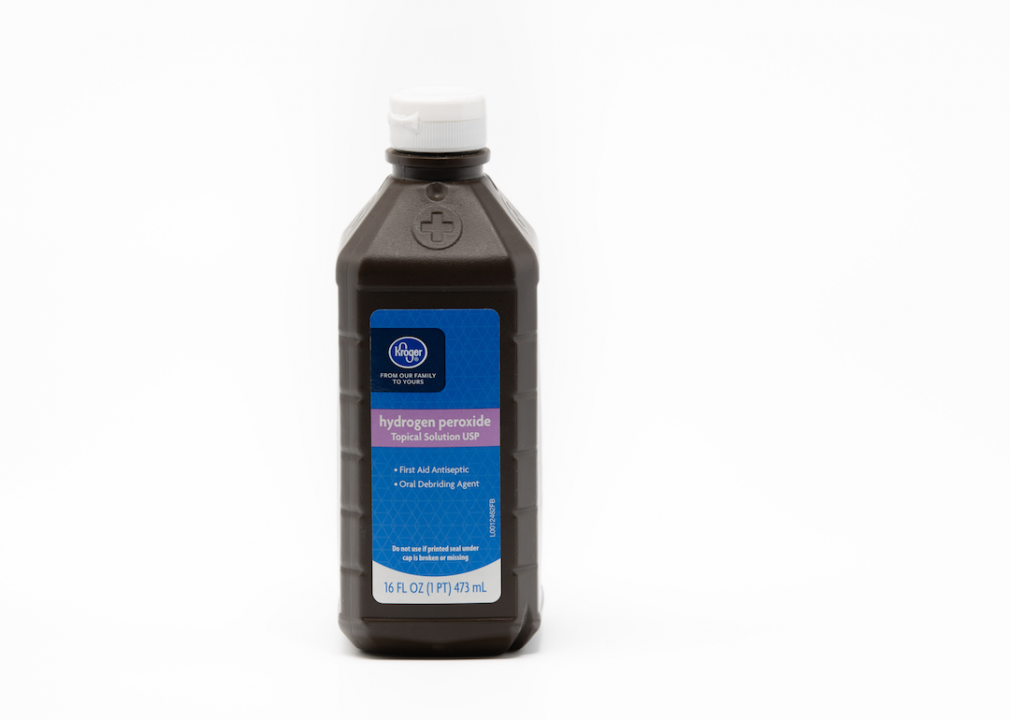
Alexander Oganezov // Shutterstock
Natural alternative: 3% hydrogen peroxide
Since its discovery in 1818, hydrogen peroxide has been used widely around the world as a natural disinfectant and bleach. Its first commercial use was as a bleaching agent for hats and to restore paintings. Mixed with vinegar or used on its own, household-strength (3%) hydrogen peroxide makes for a powerful, all-purpose cleaner. It can clean glass without streaking. It can be mixed with hot water for cleaning floors (one gallon hot water, one cup peroxide), and it can be used on its own to clean toilet bowls, bathtubs, showers, and countertops.
Where to buy: Amazon, from $14 for 1 gallon
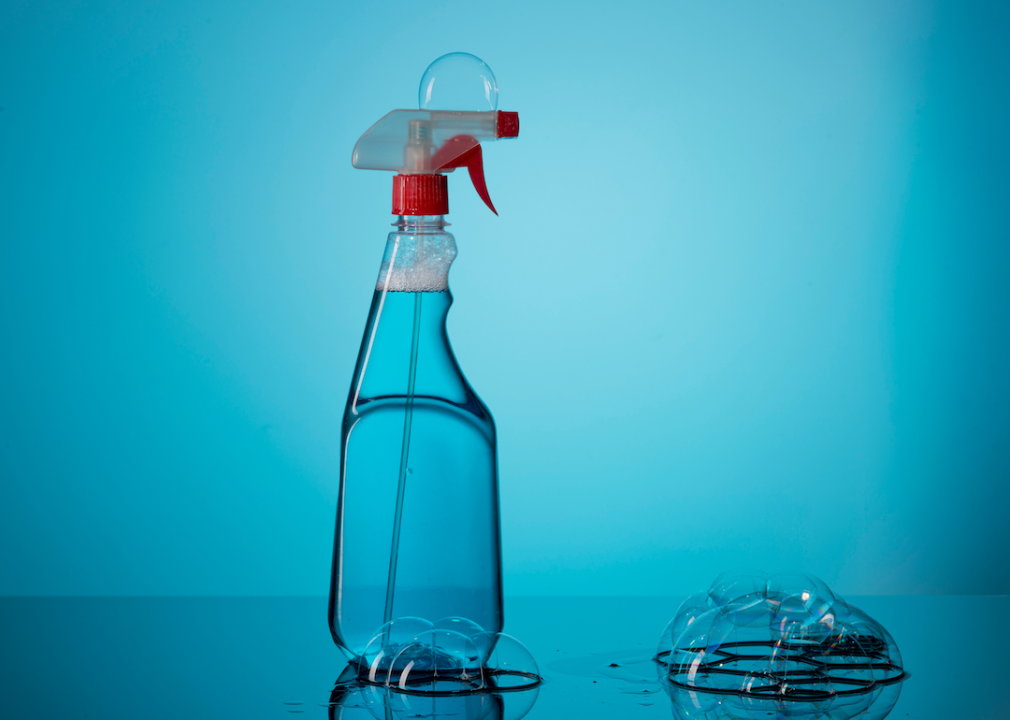
Canva
Toxic product: Glass cleaner
Most commercial glass and surface cleaners contain a solvent called butyl cellosolve, a hazardous substance that, as a carcinogen, is not safe for humans in any amount. Products such as Windex also contain fragrances that are harmful to marine life.
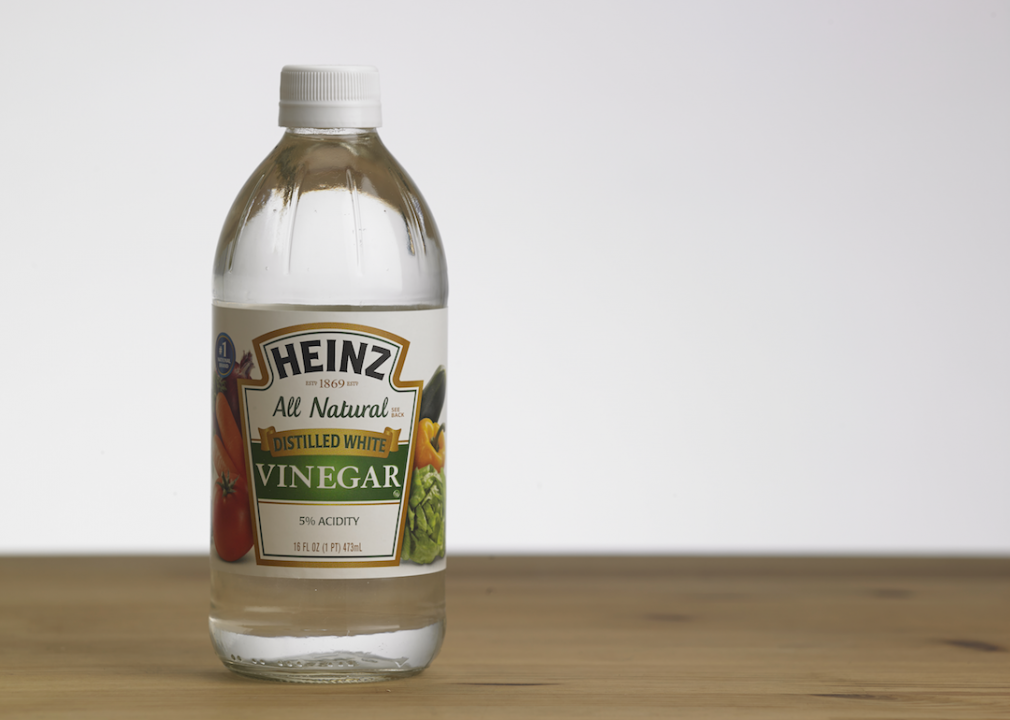
anythings // Shutterstock
Natural alternative: Vinegar
Vinegar is nothing more than an acetic acid solution derived from diluted alcohol (whether from beer, rice, or wine, among other products). The acetic acid is what gives vinegar its taste and smell—and also what makes vinegar a great all-natural cleaning product and germ-killer. It can be used alone or spruced up with essential oils. Vinegar works equally well on just about any cleaning job, save five. Never use vinegar on stone, ceramics, pearls, computers, or phones—and don’t mix vinegar with bleach (the combination creates a toxic, chlorine gas).
Where to buy: WebstaurantStore, from $7.99 for a case of four—or find out how to make your own vinegar here.
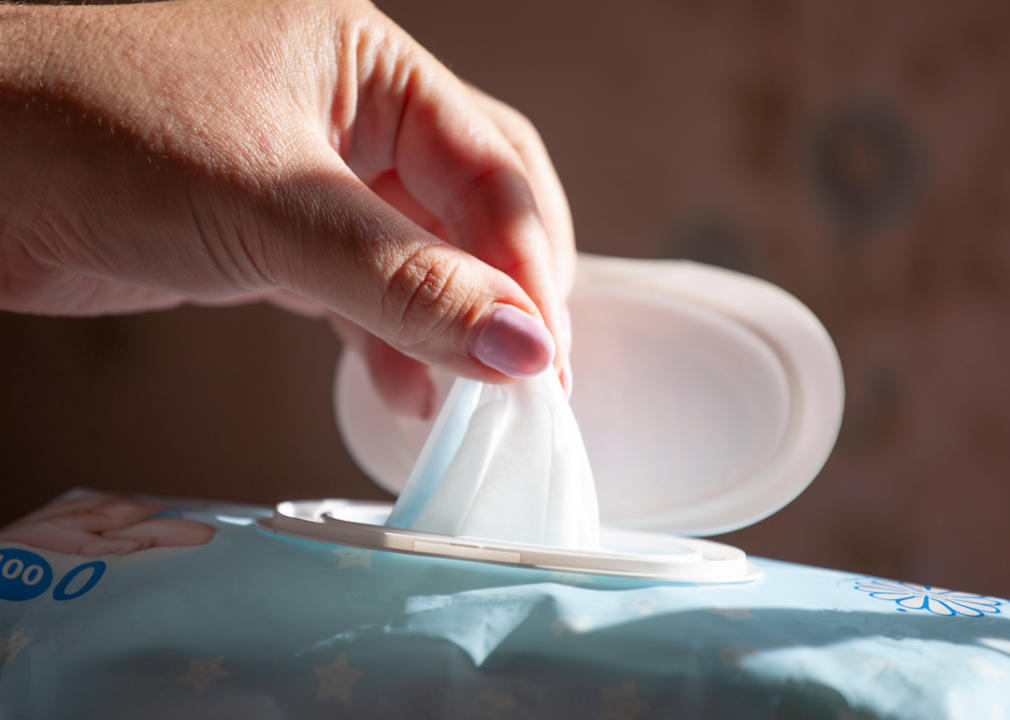
Canva
Toxic product: Cleaning wipes
Most popular, disinfectant cleaning wipes contain quaternary ammonium compounds (“quats”), which can irritate the respiratory tracks, harm the skin, and have been linked to cases of asthma, reproductive issues, birth defects, and antimicrobial resistance. Cleaning wipes are also often not biodegradable and can cost more—and be less effective—than their alternatives.
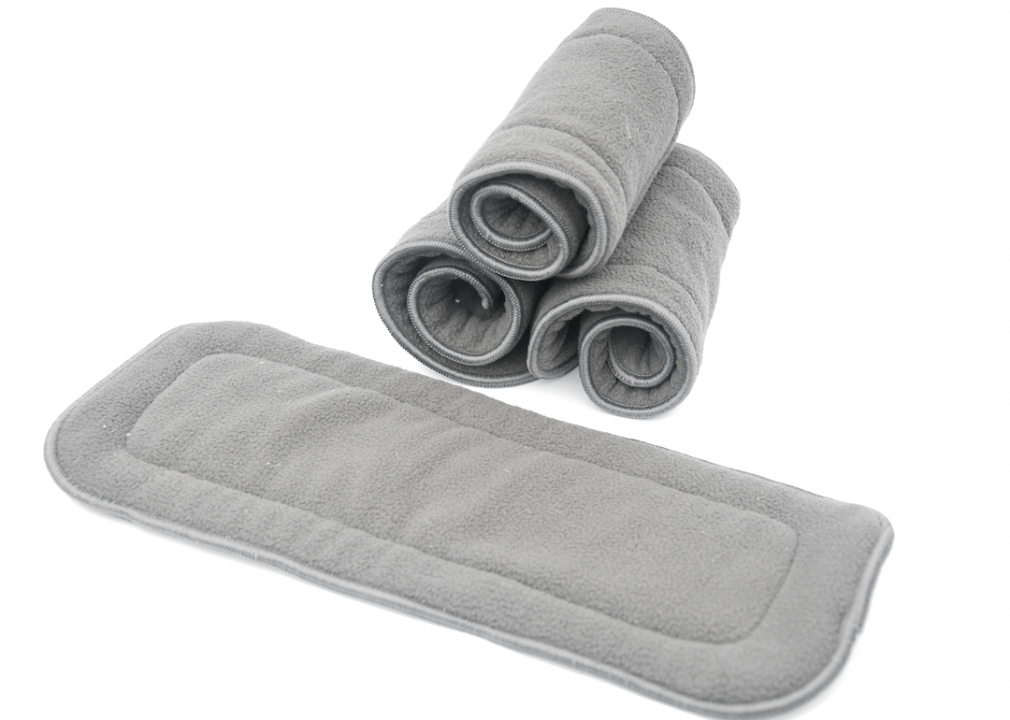
Inna Tarnavska // Shutterstock
Natural alternative: Cloth diaper inserts
Microfiber cloths do as well as wipes for buffing out smudges, general cleaning, and disinfecting, and they don’t smudge glass. But ultimately, microfiber cloths are made from (hopefully recycled) plastic, which means they’re ultimately not biodegradable even if they save water throughout their use.
Cloth diaper inserts are eco-friendly, highly absorbent, and can withstand years of use. They can also be tossed in with any regular load of laundry, saving cash and water throughout their use. To use, spray the area with vinegar or 3% hydrogen peroxide, and wipe clean. For those who would rather make their own cleaning wipes and cleaning solution, it’s easy to do with some isopropyl rubbing alcohol, essential oil, vinegar, and old towels.
Where to buy: Amazon, from $24.99 for a pack of 12
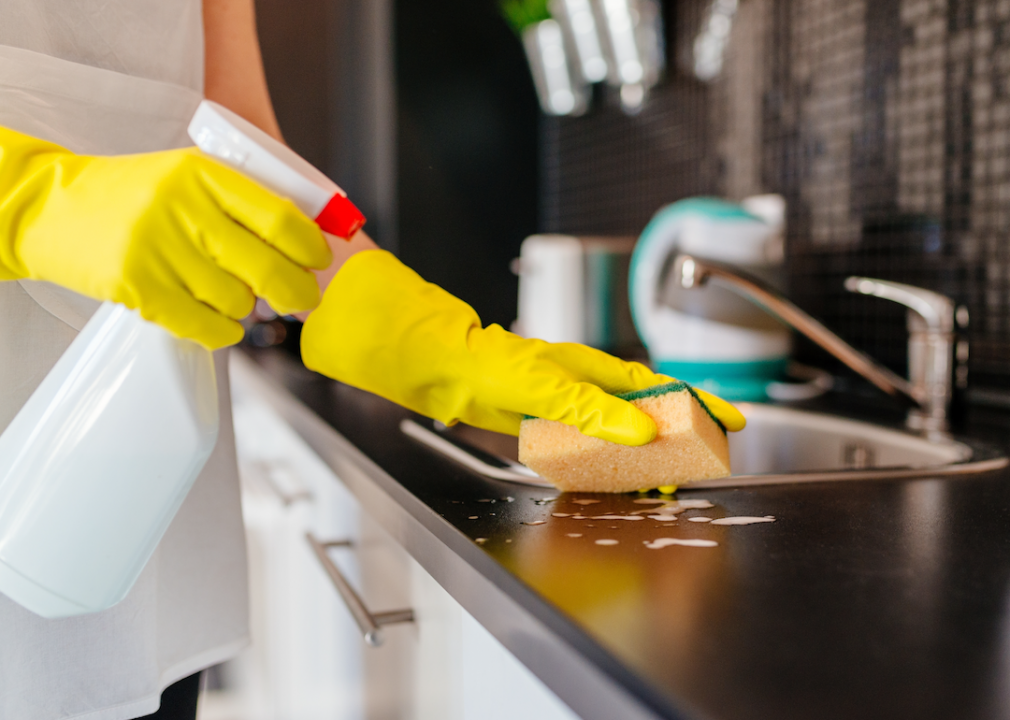
Daniel Jedzura // Shutterstock
Toxic product: Surface cleaners
The fragrance chemical galaxolide present in many surface cleaners such as Pledge, Windex, and Scrubbing Bubbles has been found to be a contaminant in waterways as well as an endocrine disruptor. A 2015 study published by the Journal of Hazardous Materials found extended exposure to galaxolide caused cellular, tissue, and genetic damage to zebra mussels. SC Johnson, purveyor of the aforementioned brand names as well as Glade, Shout, and OFF!, in 2018 set a three-year window to phase galaxolide out of its products.
Sudsing agents diethanolamine (DEA) and triethanolamine (TEA) are skin-penetrating toxins also present in many cleaning agents.
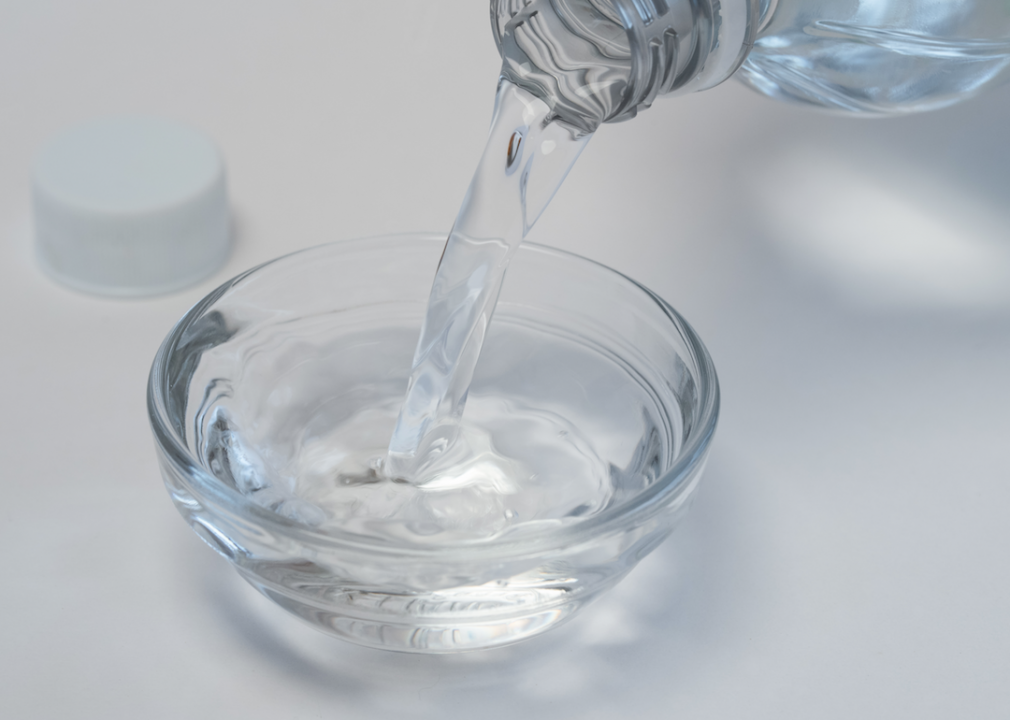
Michelle Lee Photography // Shutterstock
Natural alternative: DIY all-purpose cleaner
Distilled water, vinegar, and sprigs of fresh herbs or drops of citrus-scented essential oils are all it takes to make your own, nearly free, DIY all-purpose cleaner. Store the solution in a vessel from a used-up cleaning bottle (or buy a glass jar with a sprayer that you can use over and over). Just remember—never spray marble or granite with vinegar.
Where to buy: Amazon, from $18.99 for three-pack of glass bottles with sprayers
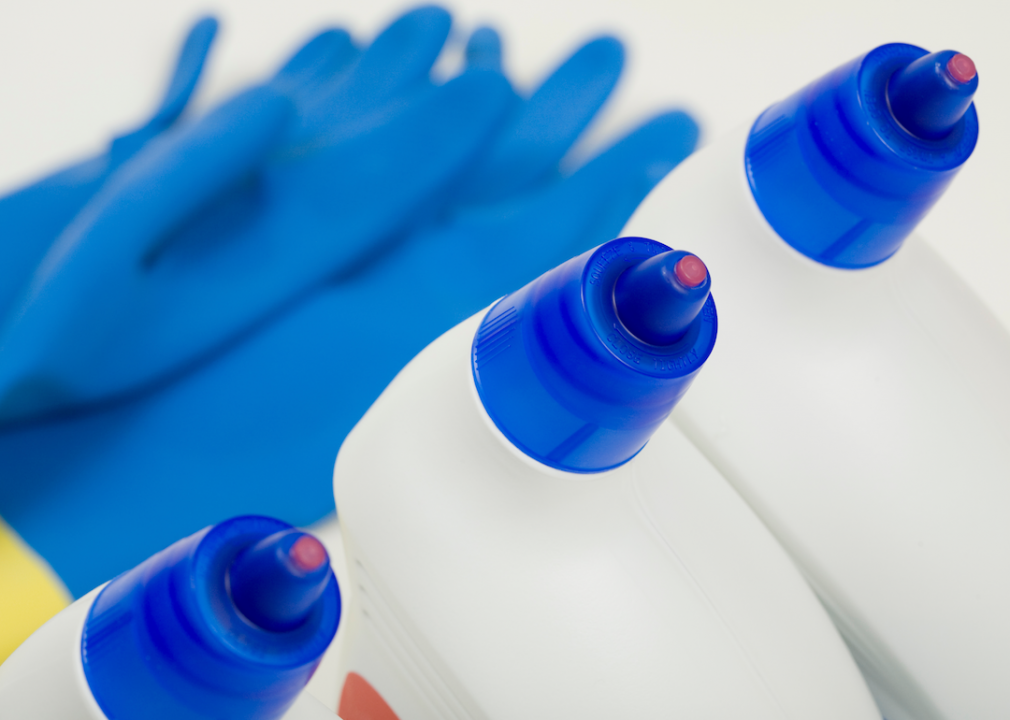
Canva
Toxic product: Toilet bowl cleaner
Toilet bowl cleaners are among the most toxic of home cleaning products. Many name brands contain eye and lung irritants (phosphoric acid, sulfates) and are highly corrosive. Because these products go directly down the drain, they are also highly contaminating for groundwater, soil, and highly toxic for plants and animals. Nutrients from cleaners like this can also wash into water bodies, contributing to toxic algal blooms.
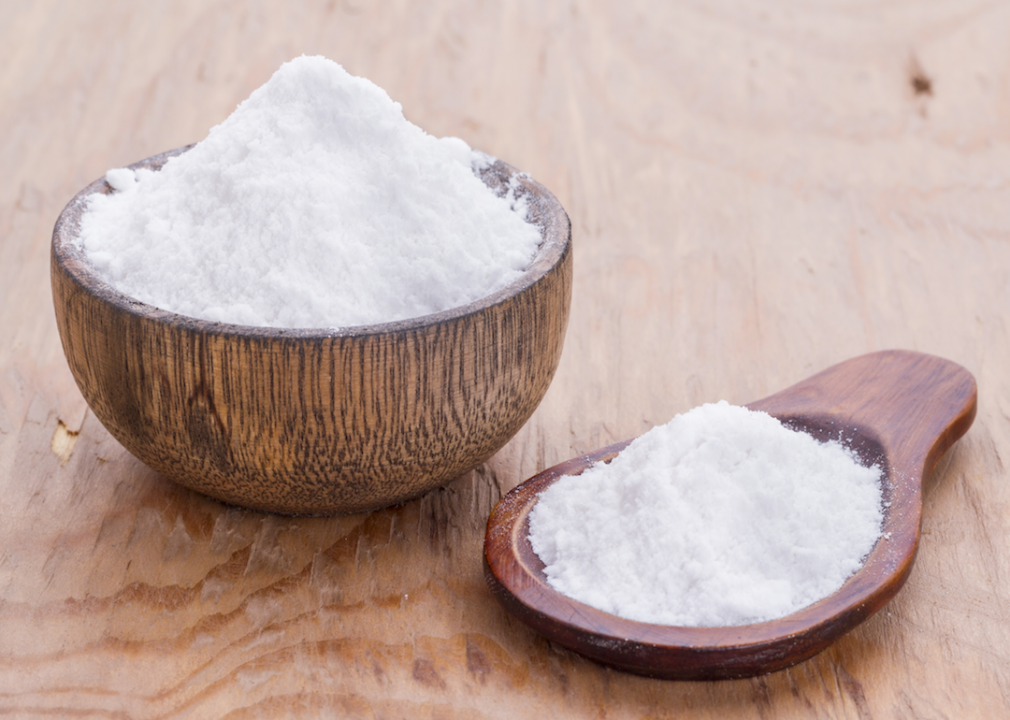
Alexander Ruiz Acevedo // Shutterstock
Natural alternative: Baking soda
To clean a toilet bowl naturally with practically zero elbow grease and at almost no financial cost, sprinkle baking soda into the bowl, add vinegar, close the lid, and walk away for 30 minutes. After half an hour has passed, use a toilet brush to scrub away stains.
Where to buy: Amazon, from $29.99 for 1 gallon of baking soda
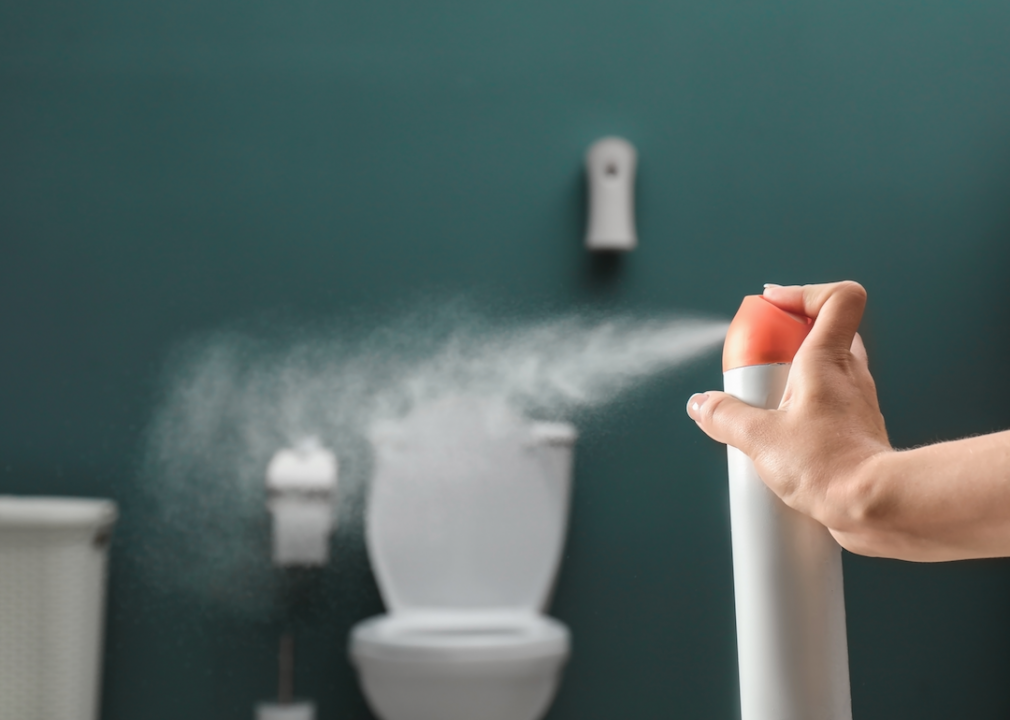
Canva
Toxic product: Air freshener
Air fresheners far and away top the list of toxic home cleaners. One reason for this is ingredients like “fragrance” can mean virtually anything, as companies are not required to provide every fragrance ingredient on labels. Fragrances can trigger allergies and act as hormone disruptors—not to mention their harsh effects on waterways, skin, and organic matter. Even the EPA acknowledges that the majority of air fresheners contain a toxic cocktail of formaldehyde, aerosol pollutants, petrochemicals, and more.
The global air freshener market by 2023 is expected to reach $12 billion, according to a 2018 report by Allied Market Research.
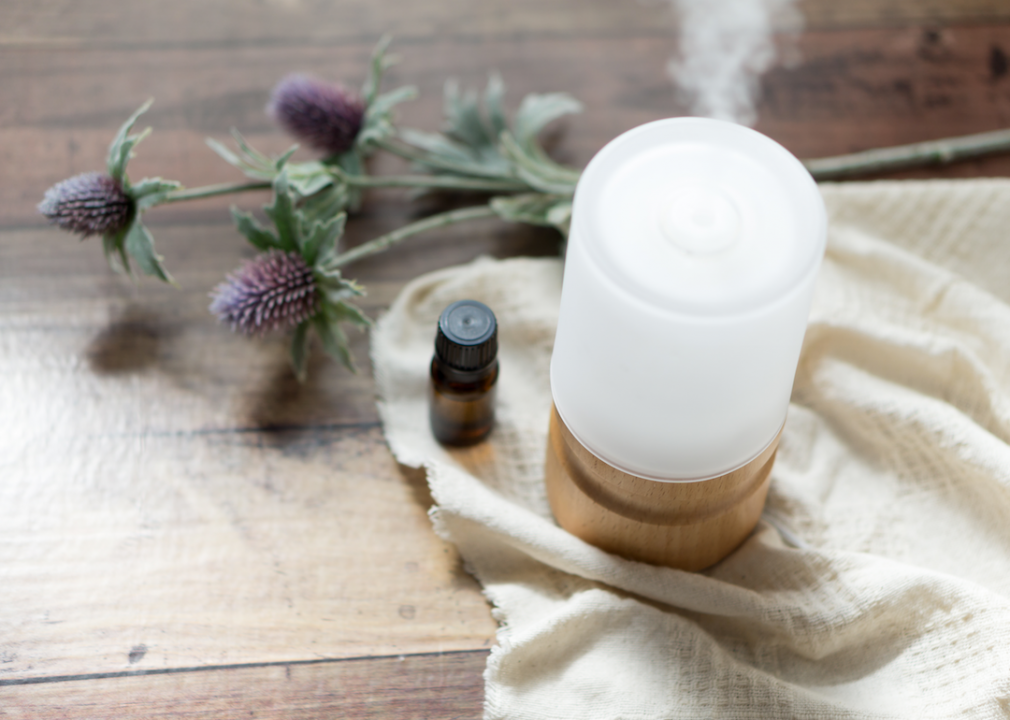
Nanako Yamanaka // Shutterstock
Natural alternative: Essential oil diffuser
If houseplants aren’t doing the trick, an essential oil diffuser will work the same way as an air freshener plug-in but without the harmful chemicals. It’s important to use 100% essential oils or oil blends to ensure the diffuser doesn’t get clogged.
Alternatively, leaving out baking soda or dry coffee grounds will absorb smells from the air rather than mask them the way most air fresheners do. For an air-freshening spray, combine half a cup of distilled water with 30 drops of your favorite essential oils.
Where to buy: Amazon, InnoGear Essential Oil Diffuser, from $14.99
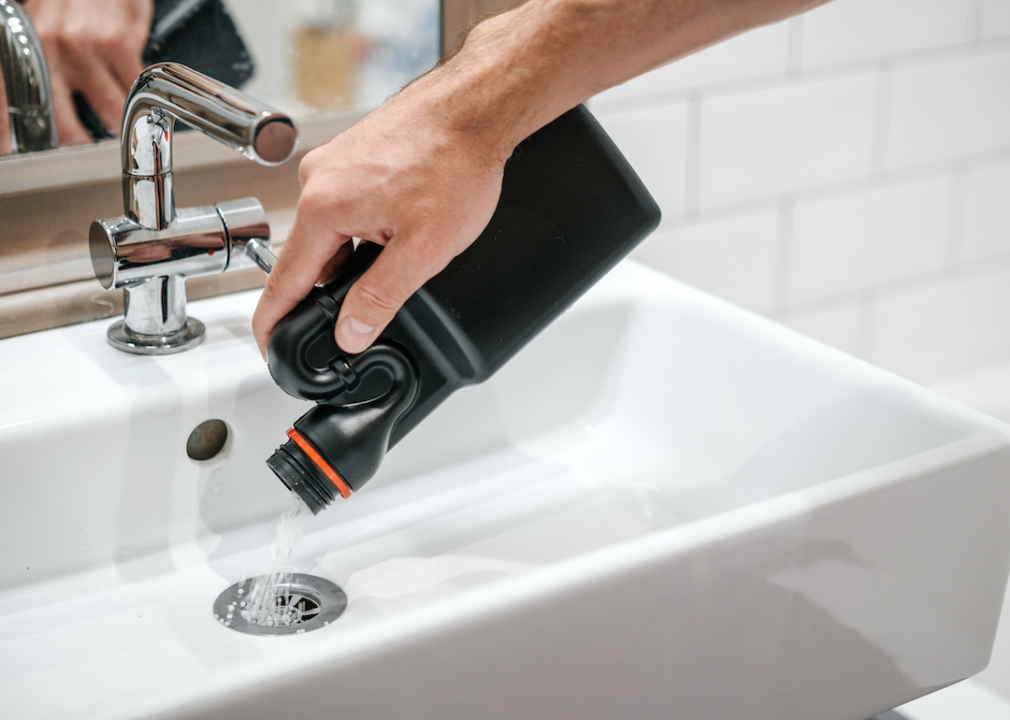
Canva
Toxic product: Drain cleaner
Many drain cleaners by design contain sodium hydroxide, a highly corrosive chemical that can burn and permanently injure human flesh and other organic compounds in addition to opening up stubborn clogs. These cleaners can ruin the drain itself if left in a drain long enough, and they can also damage anything it comes in contact with downstream.
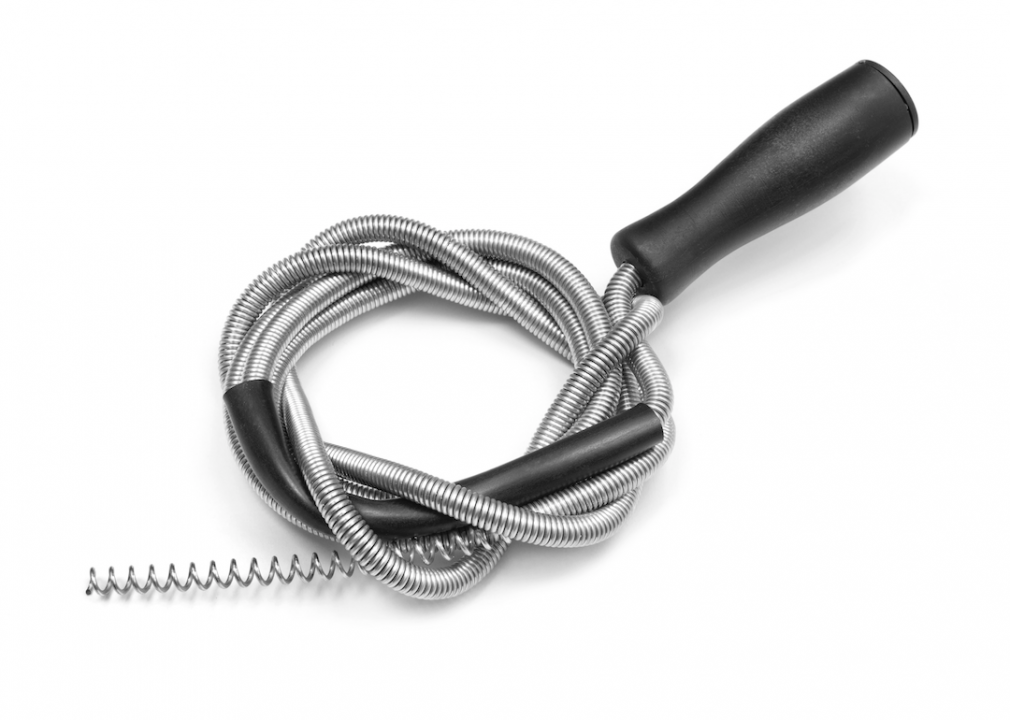
nito // Shutterstock
Natural alternative: Drain snake
A reusable drain snake is a simple way to unclog drains. For plugs further down the pipes, try a mix of half a cup of baking soda followed by half a cup of vinegar.
Where to buy: Amazon, Snake Drain Clog Remover, from $6.99
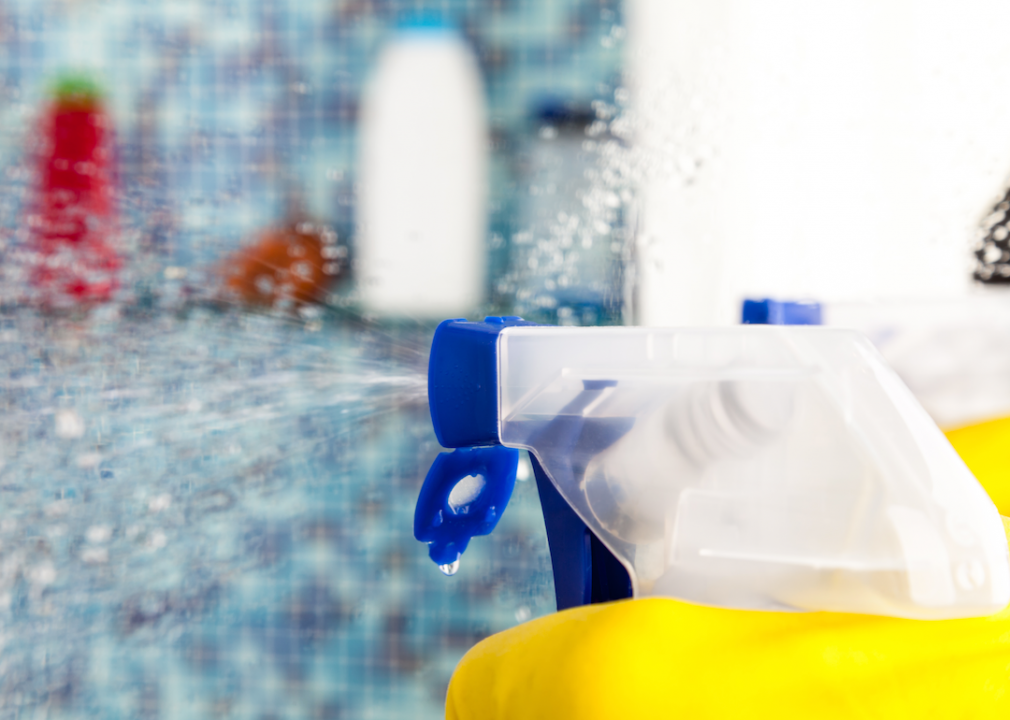
Dmitry Naumov // Shutterstock
Toxic product: Kitchen and bath cleaner
Soft Scrub with Bleach Cleanser gets a solid F rating from the EWG for its corrosive properties, toxicity for water bodies, and irritants to the skin and respiratory systems. Meanwhile, Comet has somewhere around 150 undisclosed ingredients; known chemicals in many powdered cleaners are formaldehyde, benzene, and chloroform.
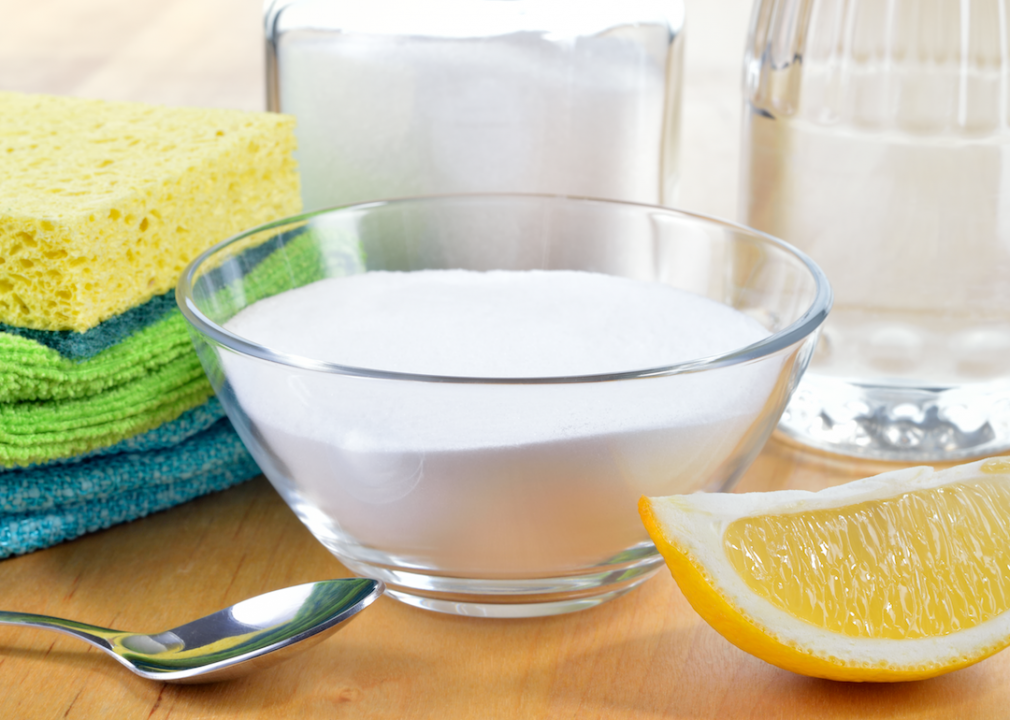
Geo-grafika // Shutterstock
Natural alternative: DIY cream cleaner for kitchen and bath
People can make their own cream cleaner quite easily with baking soda, liquid castile soap, vegetable glycerin, and a few drops of their favorite essential oil (the last ingredient is optional of course). For a dry version, mix baking soda, salt, and drops of essential oil to add fragrance.
Where to buy: Amazon, from $32 for 1 gallon of Dr. Bronner’s Pure Castile Liquid Soap
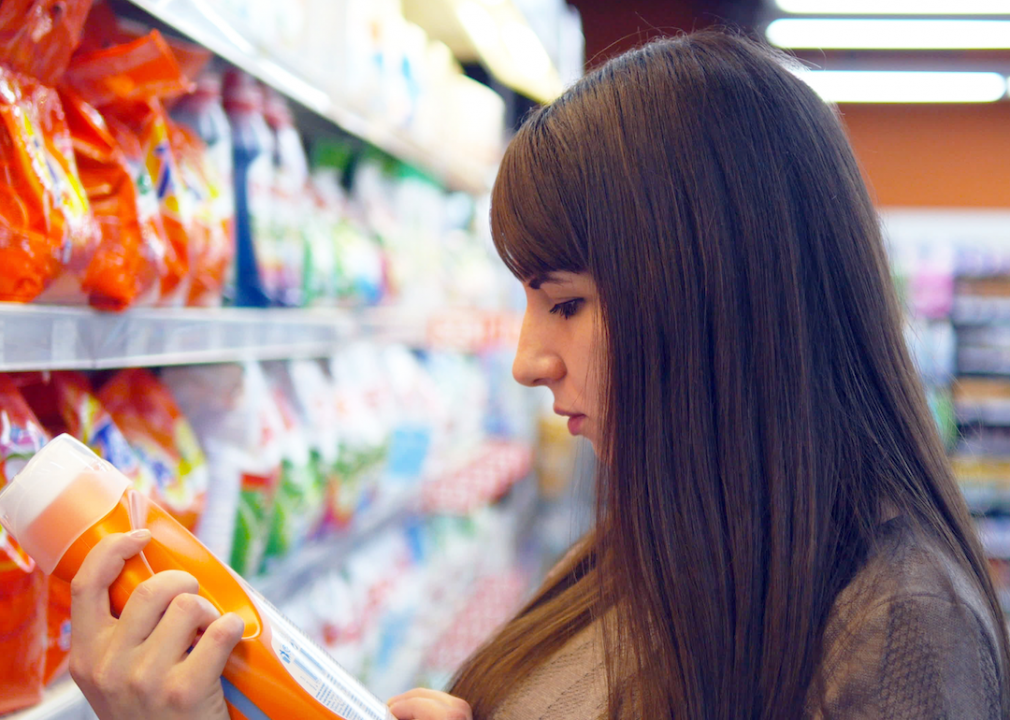
OLEH SLEPCHENKO // Shutterstock
Toxic product: Laundry detergent
The synthetic scents in laundry detergent are often derived from petroleum and widely rank as the most toxic chemicals in any cleaning product. A 2008 study from the University of Washington found dozens of toxins in leading laundry soap brands, and many of those ingredients are still present in laundry soap today.
Laundry soap, like drain cleaner, goes directly into waterways, whether septics, sewers, streams, lakes, or oceans, making them one of the chief contributors to harmful algal blooms that result from an overload of nutrients in the water.

iva // Shutterstock
Natural alternative: Easy homemade powdered detergent
To make homemade powdered laundry detergent, all it takes is one grated bar of soap (Fels-Naptha, or Dr. Bronner’s for a vegan version), two cups of Borax, and two cups of washing soda. Mix the ingredients (along with half a cup of OxiClean for brightening and stain removal, if desired). Use one or two tablespoons for each load of laundry. A box of washing soda, two bars of grated soap, and a box of Borax will cost less than $25 and last most households a year or more.
Where to buy: Amazon
– from $4.12 for 55 ounces of washing soda
– from $21.95 for 65 ounces of Borax
– from $9.99 for two bars of Dr. Bronner’s Soap
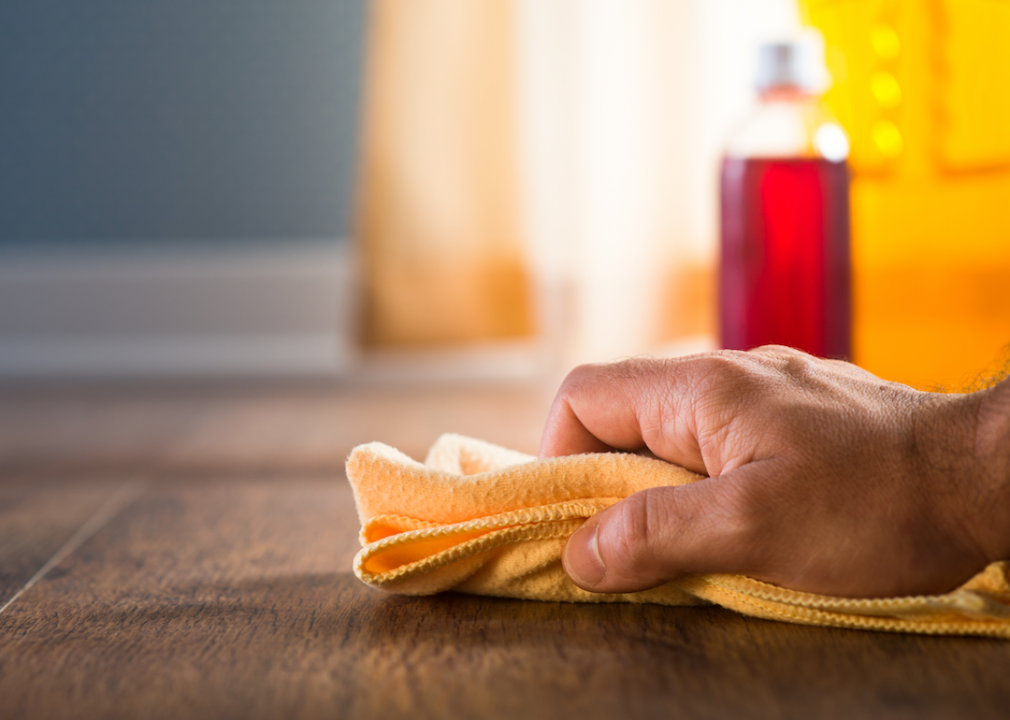
Stokkete // Shutterstock
Toxic product: Furniture polish
Lemon-scented Old English Furniture Polish gets an F rating from the EWG because of the harm it does to the respiratory system, skin, and environment. It has also been linked to increased cancer risks. Ingredients like petroleum gases, mineral spirits, unknown fragrance sources, silicone fluid, and kerosene are known for their threat to soil, waterways, and all other organic matter.
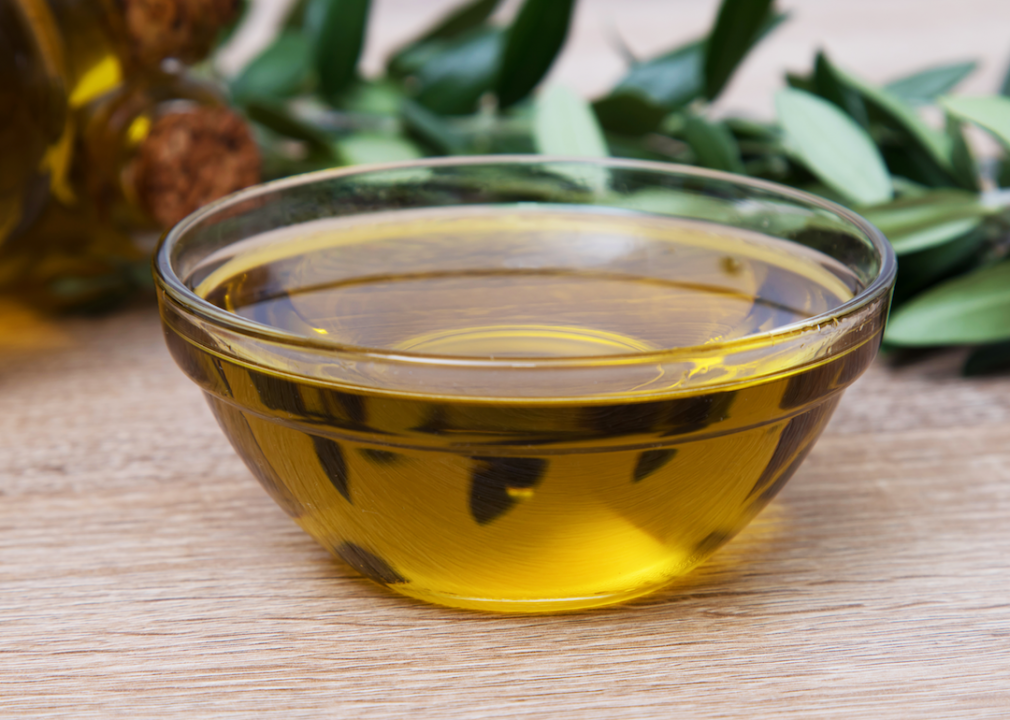
carballo // Shutterstock
Natural alternative: Olive oil and vinegar furniture polish
Equal parts vinegar and olive oil (and, optionally, a few drops of essential oil) are all it takes to make your own all-natural furniture polish. Combine the ingredients in a jar, close the lid, and shake well before applying to furniture with a clean, dry cloth.
Where to buy: Amazon, from $9.99 for two Mason Jars